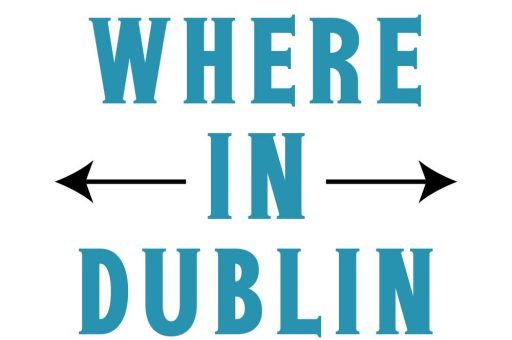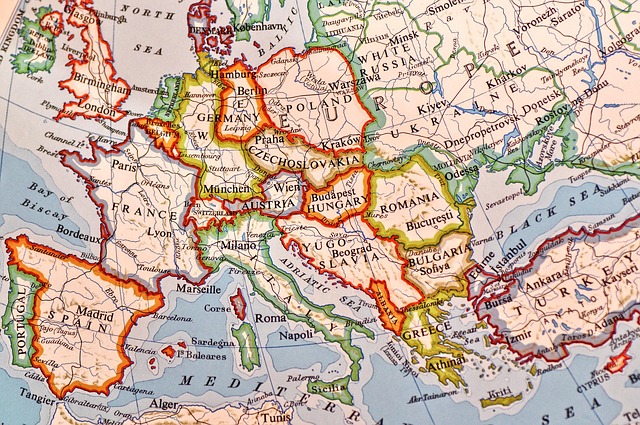When thinking about Ireland and Iceland, it’s easy to confuse the two because of their similar names. But from my own personal experience, these countries couldn’t be more different. While Ireland is known for its rolling green hills, cozy pubs, and centuries-old castles, Iceland is famous for its otherworldly landscapes, volcanoes, glaciers, and Northern Lights. This post breaks down their differences in culture, geography, travel experiences, cost, and lifestyle so you can truly understand what sets them apart.
Geography and Climate
Ireland: Emerald Isle
Ireland, often called the Emerald Isle, is located in northwestern Europe. The country is known for its lush green landscapes, thanks to its mild climate and abundant rainfall. Ireland’s terrain is mainly rolling hills, farmland, and scattered forests, giving it a soft, inviting feel. The coastline is dramatic in some areas, like the Cliffs of Moher, but nothing compares to Iceland’s raw geological landscapes.
The climate in Ireland is temperate oceanic, which means winters are mild and summers are cool. Rain is common year-round, so a raincoat is a travel essential. From my own personal experience, the constant drizzle can be cozy, especially when paired with a warm Irish coffee in a local café.
Iceland: Land of Fire and Ice
Iceland, in contrast, sits just south of the Arctic Circle. Its geography is stunning and extreme. Volcanoes, glaciers, hot springs, geysers, and rugged coastlines dominate the landscape. Unlike Ireland, Iceland has a harsh and variable climate. Winters are cold, and daylight hours are very short, while summers bring almost 24-hour daylight in some areas, thanks to the Midnight Sun.
The country earned its nickname, the Land of Fire and Ice, for a reason. From my overall experience traveling there, seeing glaciers next to volcanic craters is surreal and unlike anything on Earth.
Culture and Lifestyle
Ireland: Warm and Social
Irish culture is friendly, welcoming, and deeply rooted in music, literature, and storytelling. Pubs aren’t just bars—they’re social hubs where locals gather to chat, sing, and enjoy live music. Irish people value community and hospitality, which makes traveling here feel very personal and intimate.
Festivals are a big part of life in Ireland. From St. Patrick’s Day parades to traditional music festivals, there’s always something to celebrate. From my own personal experience, joining a local music night in Dublin felt like stepping into a movie—everyone laughed, sang, and shared stories, and strangers became friends within minutes.
Iceland: Unique and Independent
Icelandic culture is more reserved than Irish culture, but equally fascinating. People are proud of their Viking heritage, love literature and arts, and are deeply connected to nature. Icelanders value independence and self-reliance, likely shaped by the country’s harsh environment.
While the nightlife is smaller than Ireland’s, Iceland has a strong cultural scene with art galleries, music, and festivals celebrating nature, literature, and film. From my overall experience visiting Reykjavik, locals are incredibly friendly once approached, though the social vibe is quieter compared to the lively pubs in Dublin or Galway.
Language and Communication
In Ireland, English is the main language, though Irish (Gaelic) is spoken in certain regions, especially in the west. Most signs are bilingual, but English is enough for travel, dining, and social interactions.
Iceland, on the other hand, speaks Icelandic—a language rooted in Old Norse. Many Icelanders speak fluent English, so communication isn’t usually a problem, but some place names are tongue-twisters! From my own personal experience, learning to pronounce Icelandic towns like Þingvellir was both frustrating and fun, giving the trip an adventurous twist.
Tourism and Attractions
Ireland: Castles, Pubs, and Green Hills
Ireland is famous for its castles, ancient ruins, and scenic drives. The Ring of Kerry, Cliffs of Moher, Giant’s Causeway, and cities like Dublin, Galway, and Cork offer diverse experiences. Pubs are everywhere, often with live music and local cuisine like stews, soda bread, and seafood.
Ireland is also rich in history. From medieval castles to Viking ruins and literary landmarks, history buffs will find plenty to explore. From my own personal experience, walking through the streets of Kilkenny or exploring Blarney Castle felt like stepping back in time.
Iceland: Glaciers, Volcanoes, and Hot Springs
Iceland’s attractions are nature-focused and dramatic. The Golden Circle includes geysers, waterfalls, and national parks. The Blue Lagoon offers geothermal relaxation, and seeing the Northern Lights is unforgettable. For adventure seekers, there’s glacier hiking, ice caving, whale watching, and exploring lava fields.
From my own personal experience, driving along the Ring Road was like being in a sci-fi movie—the landscapes were so surreal that I couldn’t stop taking photos. Iceland feels like a playground for nature lovers and photographers.
Food and Drink
Ireland: Hearty and Comforting
Irish cuisine is hearty and comforting. Staples include potatoes, meat stews, seafood, and breads like soda bread. Pubs serve everything from fish and chips to full Irish breakfasts. And, of course, Guinness is iconic in every pub.
From my overall experience, sharing a pint in a small village pub, while chatting with locals, gave the best taste of Ireland beyond just the food. It’s about the warmth and community.
Iceland: Fresh and Unique
Icelandic food often reflects the country’s natural resources. Fresh fish, lamb, skyr (a yogurt-like product), and wild herbs dominate. Some dishes are unique, like fermented shark or puffin, but many cafés and restaurants also serve international cuisine.
From my own personal experience, the food might feel unusual at first, but it’s fresh, high quality, and tells a story of survival and resourcefulness in a harsh environment.
Cost and Travel Experience
Iceland tends to be more expensive than Ireland. Accommodation, dining, and transportation costs are higher, largely because most goods are imported and the population is small.
Ireland offers a wider range of budgets. Hostels, B&Bs, and pubs are often affordable, and public transport is easier for getting around. From my overall experience, Iceland requires more planning and budgeting, but the payoff is seeing landscapes that are truly unique.
Wildlife and Nature
Ireland: Rolling Countryside and Birds
Ireland’s wildlife includes sheep, deer, and many bird species. The countryside is rich in greenery and rivers, offering peaceful walks and scenic drives. Nature here feels soft and inviting, easy for beginners and families.
Iceland: Raw and Dramatic Nature
Iceland is famous for its rugged wildlife and landscapes. Puffins, whales, seals, and Arctic foxes are commonly seen. The dramatic natural features make it feel more like an adventure than a typical sightseeing trip. From my own personal experience, spotting whales in Husavik was one of the highlights of my Iceland visit.
Nightlife and Entertainment
Ireland has a vibrant nightlife. Cities like Dublin, Cork, and Galway offer pubs with live music, clubs, and cultural events. Local stories and music sessions create an unforgettable social experience.
Iceland’s nightlife is quieter but unique. Reykjavik has bars, music venues, and occasional festivals. The focus is often on community gatherings and cultural experiences rather than wild party scenes.
Travel Tips
- Ireland: Bring layers and a raincoat, try local pubs, rent a car for countryside exploration, and don’t miss the historic sites.
- Iceland: Book accommodation early, rent a car for flexibility, check weather daily, and always have a camera ready for landscapes.
- Both: Respect local culture, try local food, and be prepared for unpredictable weather.
From my own personal experience, planning is key in both countries. Ireland offers flexibility and spontaneity, while Iceland requires careful preparation to enjoy safely.
Conclusion
In short, Ireland vs. Iceland is a comparison of gentle beauty versus raw power, cozy community versus wild adventure, and history versus geology. Ireland’s charm lies in its green landscapes, friendly locals, and cultural richness. Iceland’s appeal comes from its extreme landscapes, outdoor adventures, and unique experiences.
From my overall experience, both countries are worth visiting, but the choice depends on what kind of experience is sought. If relaxation, history, and community matter, choose Ireland. If awe-inspiring nature and adventure are the priority, choose Iceland. Either way, a trip to either country is unforgettable.


